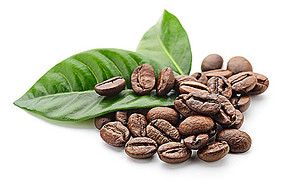Introduction to the cultivation of Brazilian Bird shit Coffee in Historical Taste and Flavor producing areas
Pay attention to coffee reviews (Weixin Official Accounts vdailycom ) and find a beautiful cafe to open your own shop
Many people have heard of cat poop coffee and think it is the most expensive coffee, but it is not. Many places in Southeast Asia (including Yunnan in China) produce cat poop coffee. An even rarer type of animal-stomach fermented coffee is "birdshit coffee," which is currently produced only on Camocim Estate farms in Brazil.
History: In the 1960s and 1970s, when Brazil's Camocim farm was still under the old Sr. When Olivar Fontenelle de Araújo was under his name, he came up with various ways to protect the forest of the farm, such as introducing exotic species such as Pinus Elliottii and Eucalyptus, planting orchid plants of Lagerstroemia family, building small reservoirs, etc., thus opening the transition of Camocim into a modern organic and biodynamic farm.
In the 1980s and 1990s, these efforts began to bear fruit, improving the ecological environment of farms and greatly increasing wildlife.

World's rarest coffee: Jacu Bird Coffee
In 1999, in order to inherit the pioneering spirit of his 92-year-old grandfather, farmer Sr. Henrique Sloper Araújo decided to introduce organic coffee growing methods and grow coffee on hillsides more suitable for coffee.
Camocim Farm has approximately 123.5 acres (50 hectares) under coffee cultivation, and although some slash pine trees have been felled, the biodiversity of the farm has been preserved. Initially coffee was grown mainly in forest clearings and shady woodlands. Today coffee is grown only on terrace slopes with natural vegetation. The farm regularly prunes coffee trees and leaves and twigs are returned to the field as compost to improve soil organic matter.
Today, this organic method of cultivation, which balances natural forests and vegetation, has become a model for Brazil's future eco-friendly coffee production.
World's rarest coffee: Jacu Bird Coffee
Jacu Bird Coffee
Camocim Farm, Pedra Azul in Espirito Santo, Brazil, is famous for its South American bird called the Jacu. This bird lives in shady coffee groves and eats ripe coffee berries, which is the natural selection process for producing high-quality coffee.
Farmer Henrique Sloper does not see the birds, which eat ripe coffee berries, as pests, but as natural additions to the farm flora and fauna, so Camocim welcomes them Jacu Bird, who sees them as part of the farm's agricultural ecosystem, uses them as the most effective coffee picking "workers", collecting the odor-free bird droppings once the birds have eaten the ripe coffee and defecated under the coffee trees, sending them to special drying sites to dry, clean them to Parchment beans, and store them for about three months. Jacu Bird coffee has a pleasant, soft taste, with a hint of nutty sweetness and dryness, lingering molasses, moist notes of dark bread and a hint of black pepper.
Jacu Bird is sweet, thick and slightly tart than traditional Brazilian coffee grown at Camocim Farm. This is undoubtedly the rarest coffee in the world.
Jacu Bird Coffee:
Farm Name:
Farm Founder:
Current farmer:
Large producing area:
Small producing area:
Altitude:
Annual rainfall:
Coffee varieties:
Processing method:
Drying method:
flowering period:
Harvest period:
Other related information:
Camocim Estate (Jacu Bird Coffee)
Olivar Fontenelle de Araújo
Henrique Sloper
Espirito Santo
Pedra Azul
400-500 m above sea level
1500-2000 mm
Bourbon, Icatu, Catuai
Bird-processed
sun drying on a bed
August-December
May-September
Camocim Estate has been certified as an organic farm by Instituto Biodinamico do Brazil
Important Notice :
前街咖啡 FrontStreet Coffee has moved to new addredd:
FrontStreet Coffee Address: 315,Donghua East Road,GuangZhou
Tel:020 38364473
- Prev

Introduction of Brazilian coffee Sinio cafezinho
Following Kaiping (official Wechat account vdailycom) found that Beautiful Cafe opened a small shop of its own. Brazil is the largest coffee producer in the world. But Brazil originally did not produce coffee. Coffee originated in Arabia and was introduced into Europe in the 18th century and was very popular. Later, the French specially shipped the coffee saplings to French Guiana, which was finally introduced to Brazil, and finally carried forward in Brazil.
- Next

Introduction to Brazilian Coffee Variety Culture description of flavor characteristics of Brazilian red and yellow bourbon coffee beans
Following Cafe Review (official Wechat account vdailycom) found that Brazilian Coffee varieties are roughly divided into two categories: (1) Elaraby Coffee varieties: except Indonesia, both American and African products are acidic, which varies slightly due to different regions. (2)
Related
- Detailed explanation of Jadeite planting Land in Panamanian Jadeite Manor introduction to the grading system of Jadeite competitive bidding, Red bid, Green bid and Rose Summer
- Story of Coffee planting in Brenka region of Costa Rica Stonehenge Manor anaerobic heavy honey treatment of flavor mouth
- What's on the barrel of Blue Mountain Coffee beans?
- Can American coffee also pull flowers? How to use hot American style to pull out a good-looking pattern?
- Can you make a cold extract with coffee beans? What is the right proportion for cold-extracted coffee formula?
- Indonesian PWN Gold Mandrine Coffee Origin Features Flavor How to Chong? Mandolin coffee is American.
- A brief introduction to the flavor characteristics of Brazilian yellow bourbon coffee beans
- What is the effect of different water quality on the flavor of cold-extracted coffee? What kind of water is best for brewing coffee?
- Why do you think of Rose Summer whenever you mention Panamanian coffee?
- Introduction to the characteristics of authentic blue mountain coffee bean producing areas? What is the CIB Coffee Authority in Jamaica?

